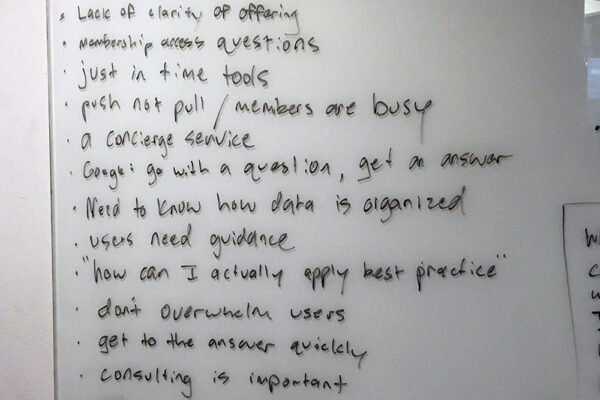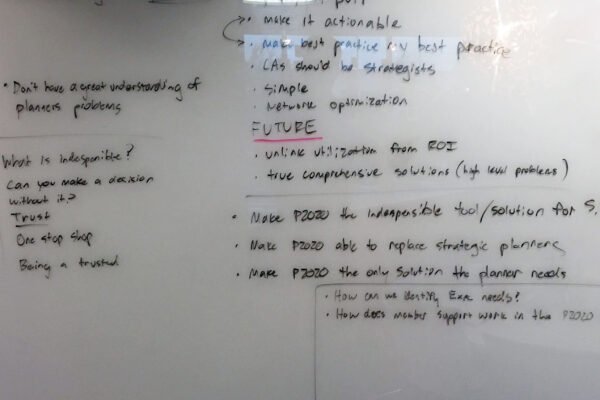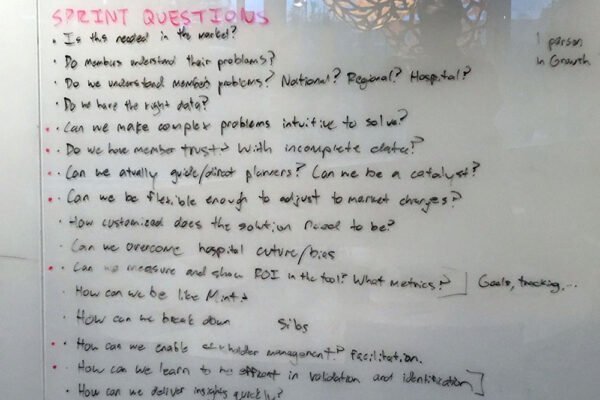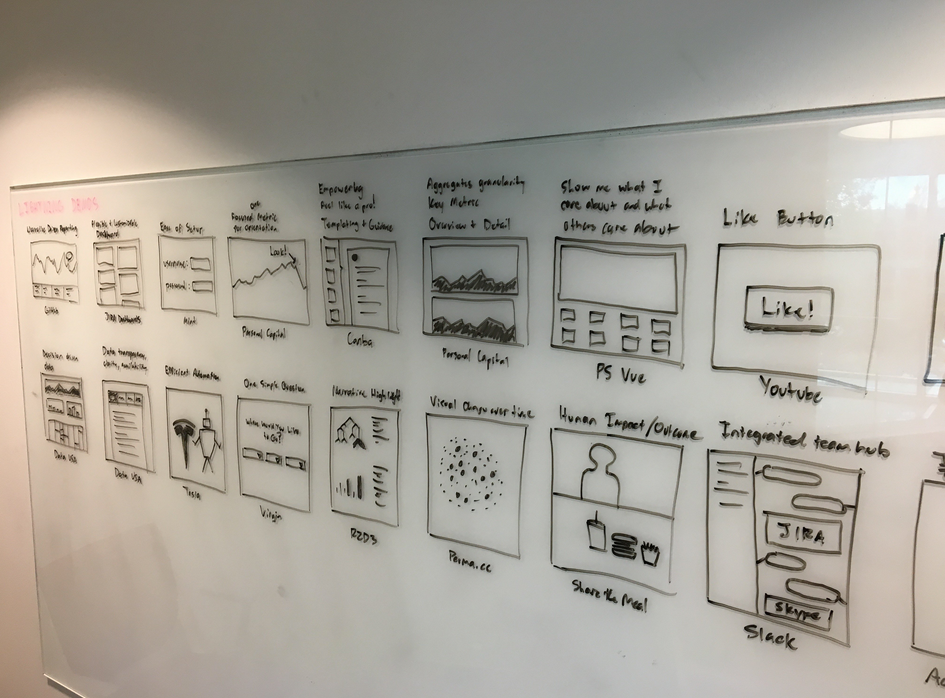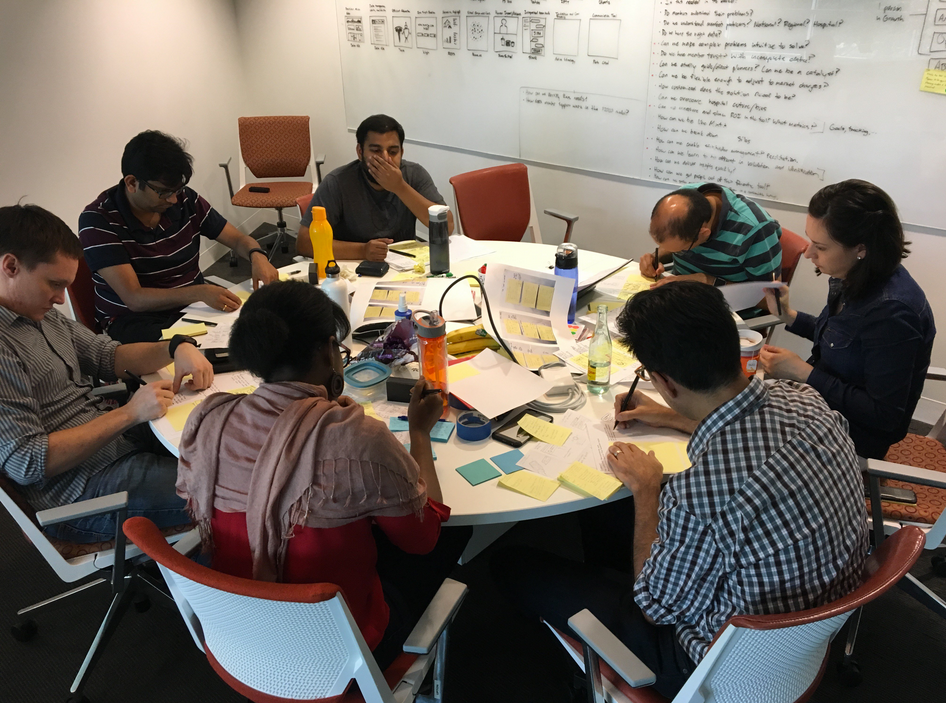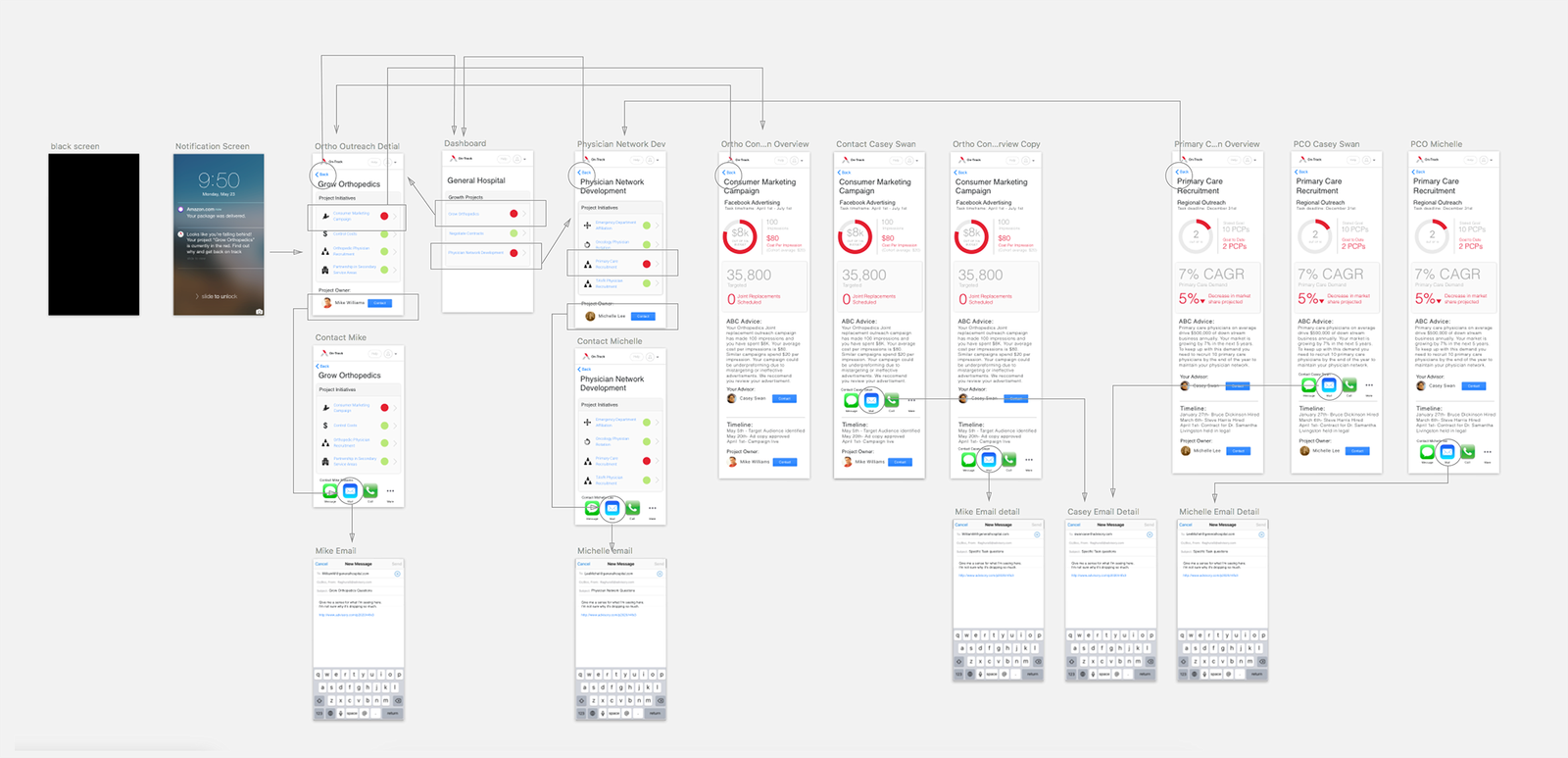On-Track is a product of a Google Ventures-style Sprint Workshop in which our assembled team set out to discover how the organization could better serve the unmet needs of its members. The outcome of our week-long exercise was used by our marketing team to sell a service called Planning 20/20, which provides Hospitals insight into the execution of their strategic planning efforts.
How Hospital CSOs Stay One Step Ahead Of Problems
Mapping Out The Problem
Gathering a diverse group of Engineers, PMs, Salespeople, and UXers, we began listing out all of the challenges we were currently facing within our service offering. This included transitioning from one monolithic application offering to something more à la carte. The goal was to determine our long-term objectives in addition to nailing down outstanding questions and potential obstacles that we’d have to resolve for our effort to be successful.
We then created a map outlining what we collectively thought the process was as it exists today. Once our draft had been created, we pulled in experts from around the firm to give their perspective on what we were proposing. This highly interactive session had us making changes to our white boarding diagram on the fly to accommodate existing hospital setting scenarios. Once our experts weighed in on the direction (3 green dots), we picked our target: an ambitious, bu manageable application to aid Chief Strategy Officers in identifying immediate problems in their growth projects.
Sketching & Remixing
We reviewed and shared interesting solutions to similar problems in different industries via Lightning Demos. After highlighting specific differentiators, we began individually sketching our best ideas, employing techniques from the GV workshop. We then spent the rest of the day refining those ideas on our own. We also began recruiting customers that fit our target profile in order for us to test our ideas later.
Gallery & Decision Making
The next morning a refined version of our best ideas was placed on the wall and participants were given stickers (small red dots) to highlight which items they found particularly interesting. This would help us refine the concepts that had the most potential of meeting our long-term goal. The items with the most dots would move onto be storyboarded and ultimately presented as a prototype to a select group of members. The Decider (high level executive sponsor invited to the critique) was given extra dots to tip the scales to whichever idea she deems to have the most potential.
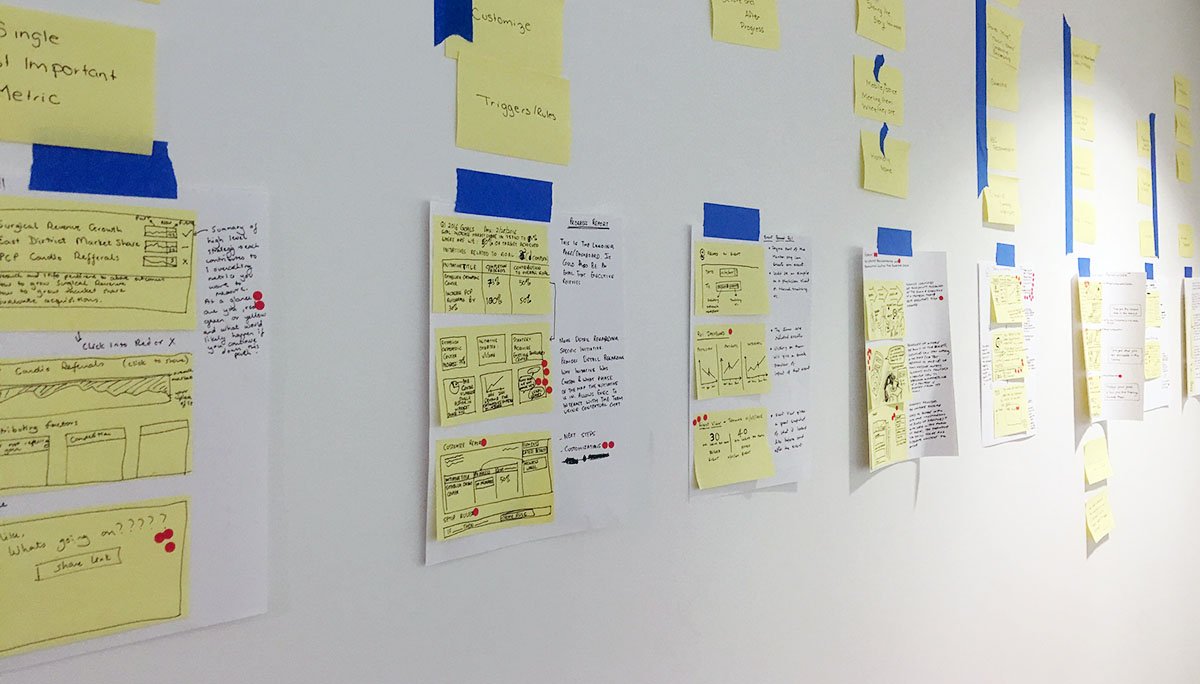
Defining Roles / Building The Prototype

This flow describes the primary user (Chief Strategic Officer) going from receiving a text message on their device to taking action by contacting their account representative directly.
Testing, Listening, & Capturing



